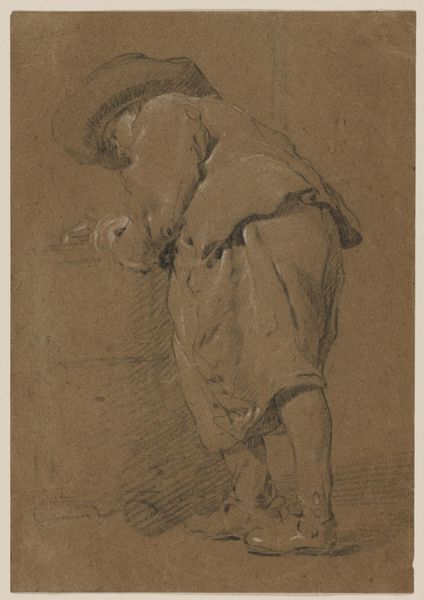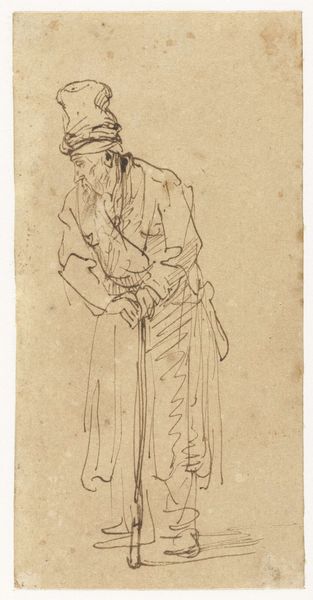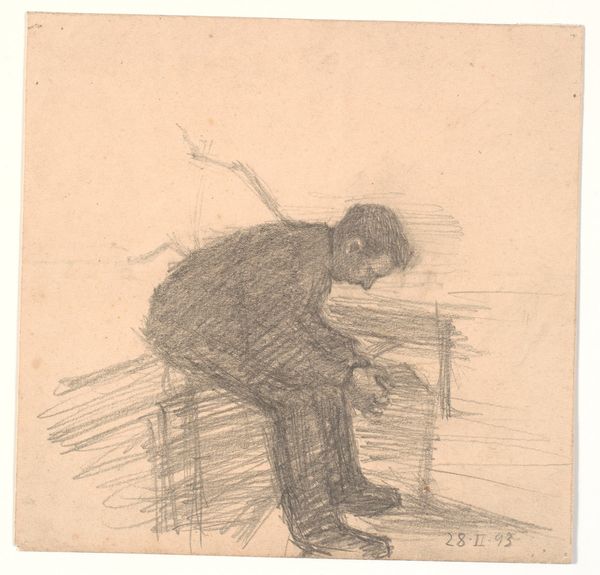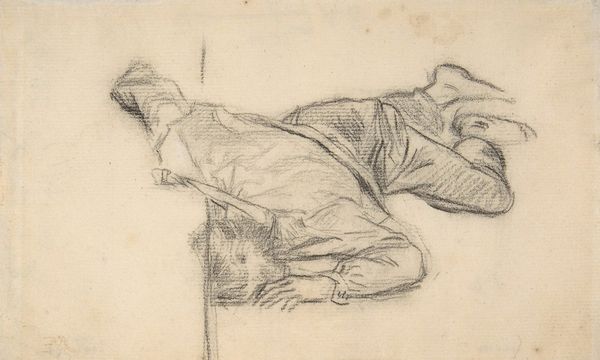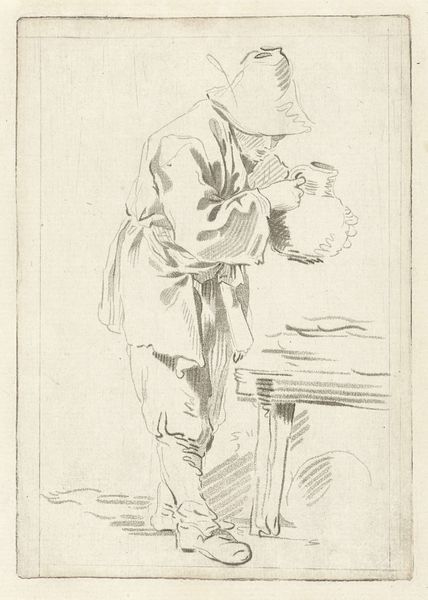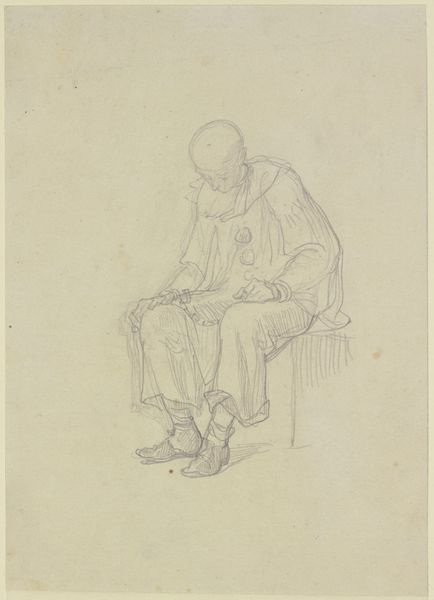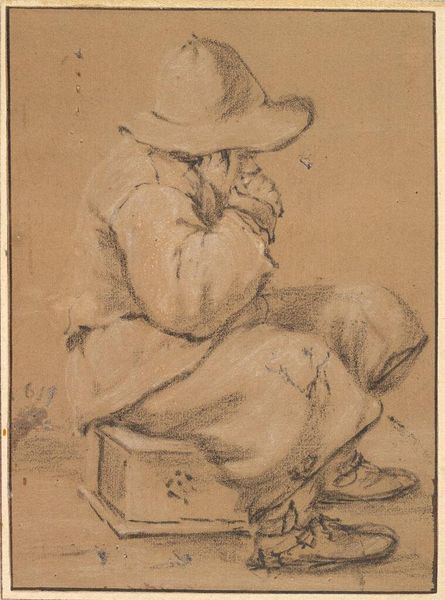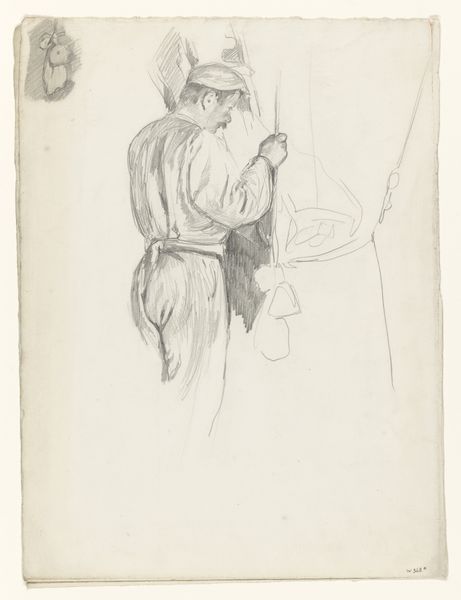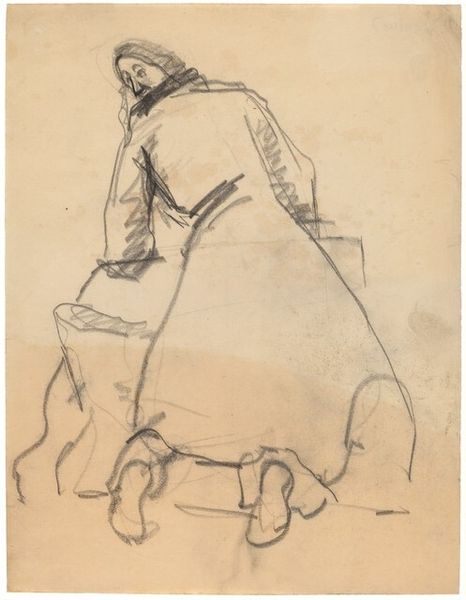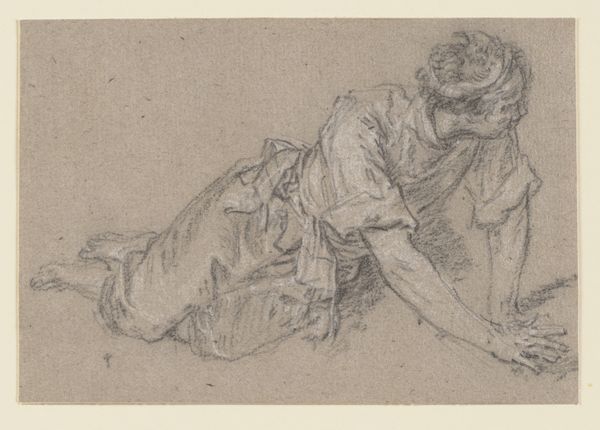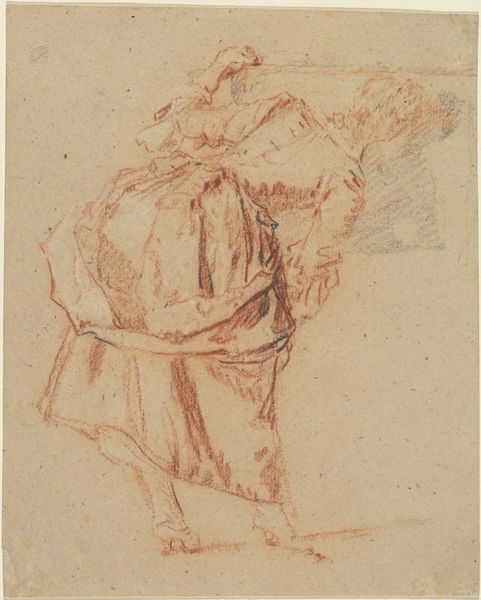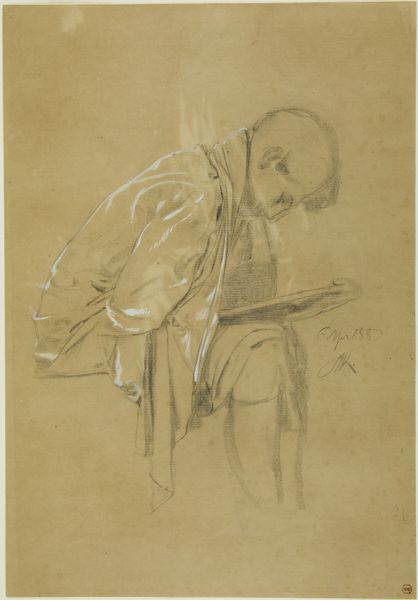
Zittende boer, op de rug gezien, met een been op de bank 1659 - 1670
0:00
0:00
adriaenvanostade
Rijksmuseum
drawing, paper, pencil
#
portrait
#
drawing
#
dutch-golden-age
#
figuration
#
paper
#
pencil
#
genre-painting
#
realism
Dimensions: height 199 mm, width 190 mm
Copyright: Rijks Museum: Open Domain
Editor: This is "Zittende boer, op de rug gezien, met een been op de bank" – "Seated farmer, seen from the back, with one leg on the bench" – a pencil drawing on paper by Adriaen van Ostade, from sometime between 1659 and 1670. The drawing feels quiet, intimate, a snapshot of everyday life. What do you see in this piece? Curator: I see a potent representation of labor and class within the Dutch Golden Age. Ostade's choice to depict the farmer from the back is significant. It depersonalizes the subject, inviting us to consider him not as an individual, but as a representative of the working class. What does his posture tell you? Editor: He looks exhausted, maybe? Kind of slumped over on the bench... Curator: Exactly. The drawing subtly critiques the social structures of the time. Consider the broader context: The Golden Age was a period of immense wealth for some, but that wealth was built, in part, on the labor of people like this farmer. The artist may subtly imply that while the merchant class was commissioning portraits aggrandizing their wealth and success, who was accounting for the working class on whose back this wealth had been built? Do you see echoes of contemporary issues here? Editor: It definitely makes you think about who benefits from whose work. I guess I hadn't considered how this genre scene could also be a form of social commentary. Curator: It invites questions about representation, power dynamics, and who gets to tell whose story, something artists still grapple with today. Looking at the history can inspire our awareness of injustice now. What are you left thinking about? Editor: How art can speak to power even through simple scenes. And how important it is to question the narratives presented to us. Curator: Precisely. Every image has its place in social movements, revealing silent biases or forgotten histories.
Comments
No comments
Be the first to comment and join the conversation on the ultimate creative platform.
